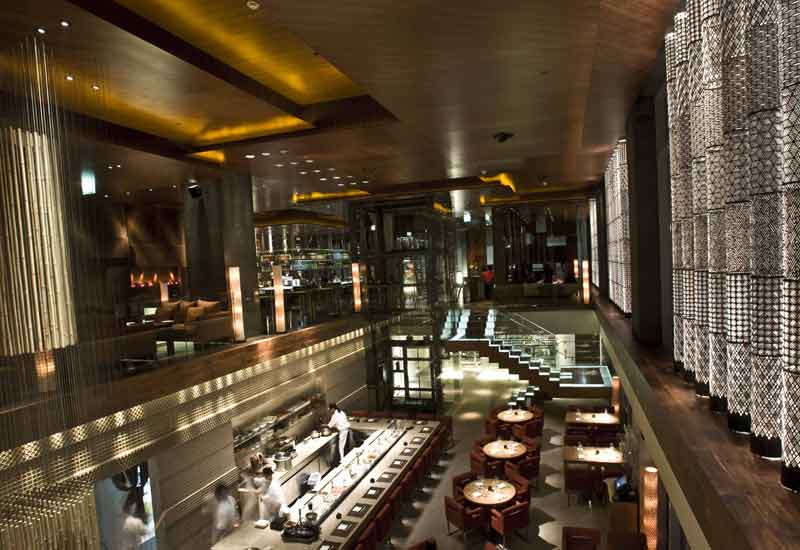5) ZUMA DUBAI, DUBAI INTERNATIONAL FINANCIAL CENTRE, UAE
Zuma Dubai’s interior concept was created by designer Noriyoshi Muramatsu, of Tokyo design firm Studio Glitt — the man responsible for the interiors of Zuma’s other restaurants in London, Hong Kong and Istanbul.
“He was inspired by the six elements of Earth, Fire, Iron, Wood, Water and Air,” says Zuma Dubai operations director Elmar Pichorner.
“The aim was to create not only novelty but also a sense of nostalgia. Noriyoshi tried to create the space for guests to enjoy walking around and looking at beautiful views in the restaurant,” he explains.
Interior design is crucially important in the up-market segment of the F&B market, according to Pichorner.
“Guests with higher disposable incomes not only choose the fundamental offering of food and beverage, but very much also take ambience into account when selecting a preferred venue,” he noted.
“If you had two outlets to choose from that both have identical F&B offerings and price, one located in a barren space, the other with a comfortable, attractive interior, where would you go?
“The thing to remember is that design has to create an ambience that appeals to all senses — sight, touch, smell, and sound — as well as being flexible enough to allow the venue to adjust the experience through the day’s moods.”

Advertisement









 Search our database of more than 2,700 industry companies
Search our database of more than 2,700 industry companies









